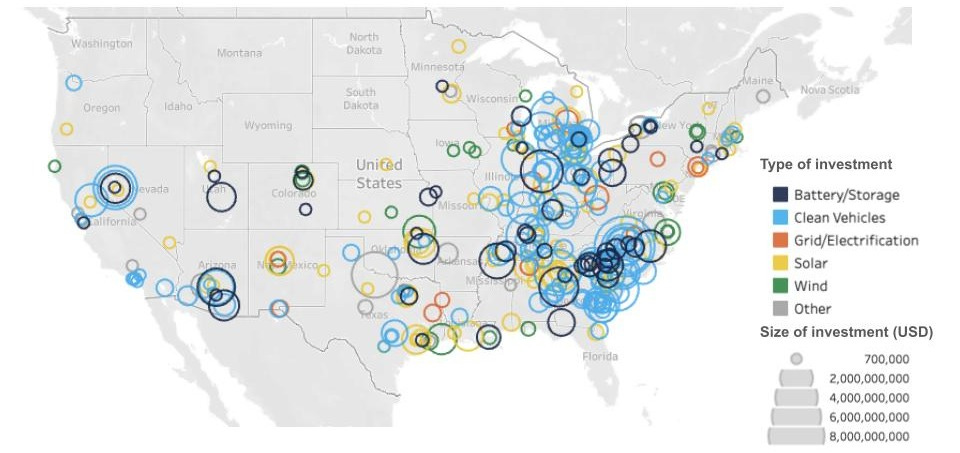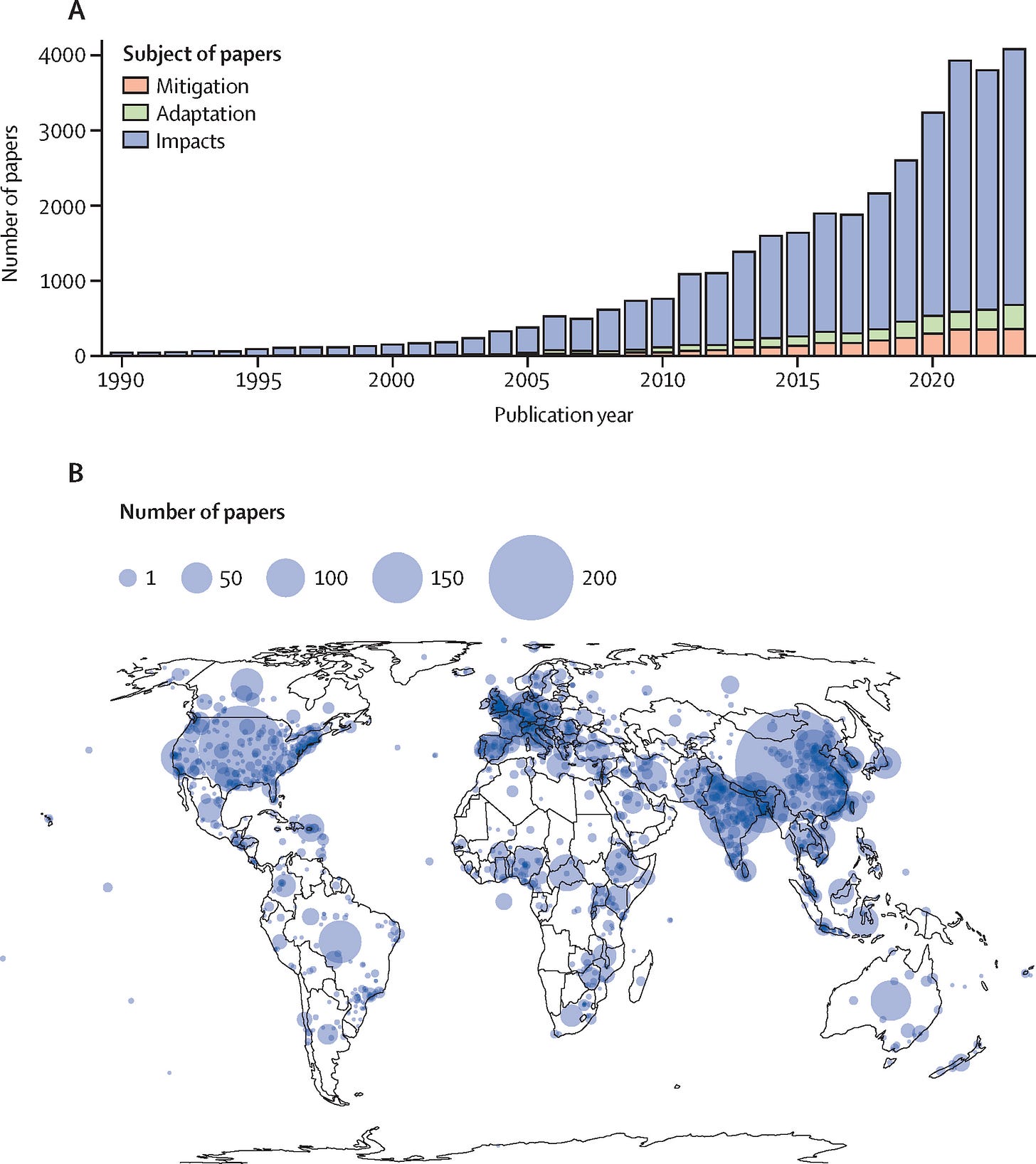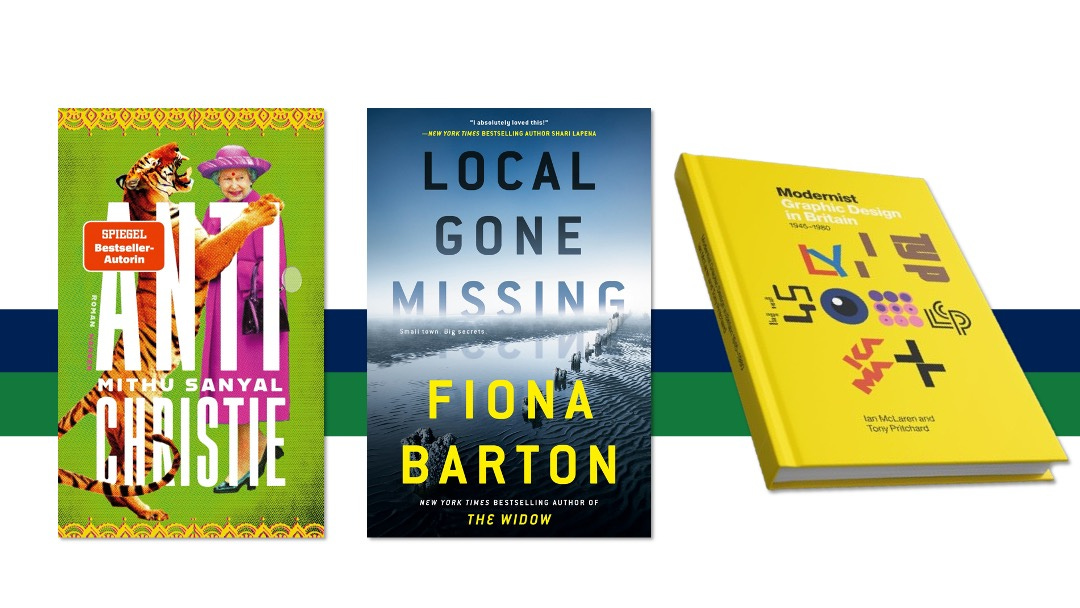Not much is calm before this storm
A round up of the latest scientific evidence and economic analysis, before November shifts the focus to the politics of the US election and COP29
Hopes for transformative climate action are not high as we head into November. In the U.S.—despite the scale, ambition (see figure below) and impact (see here) of President Biden’s Inflation Reduction Act—climate policy has not been a central issue in the election campaign. On the global diplomacy stage, expectations of significant policy commitments coming from COP29 are muted. And yet, November promises to be yet another watershed moment for climate action, as more details will emerge on the direction of travel of climate policy and on whether the U.S.A. will turn from climate leader to climate delayer.

Before front pages and newsletters are written on the global implications of these events,its important for city readers and residents alike to take a calm look at the latest scientific and economic evidence.
🇺🇳 UN Emission Gap Report - October 2024
The latest Emissions Gap Report from the United Nations Environment Programme offers a dire picture of the rate at which greenhouse gas emissions are increasing. Global GHG emissions increased 1.3% in 2023, with the largest increase in India (+6.2%) and China (+5.2%), though both countries remain responsible for a minority of the historical CO2 emissions between 1850 and 2022 (3% and 12% respectively). The report’s methodology has its limits—investigative journalists from Heated pointed out that it significantly underestimates the GHG contribution of livestock—but this makes its message more urgent, not less.
The gap between the current trend in emissions and the pathways necessary for temperature rise to stay below 1.5ºC and 2ºC remains large. Current Nationally Determined Contributions (NDCs) are not ambitious enough, as the figure below shows.
Immediate action is paramount. For example, simply getting the world on track to achieve conditional NDCs (those that are conditional to countries receiving international support, e.g. finance, technical assistance) would result in 0.5ºC less warming than existing policies.

⚕️ The Lancet Countdown report on climate and health
The 2024 report of the Lancet Countdown on health and climate change was published this week. The report does not make for cheerful reading, but its message is a necessary one. The report found that global heat-related deaths in people over age 65 were 167% higher last year than they were on average during the 1990s—a testament to the fact that we’re already seeing the impacts of climate change on our health.
“Concerningly, multiple hazards revealed by individual indicators are likely to have simultaneous compounding and cascading impacts on the complex and interconnected human systems that sustain good health, disproportionately threatening people's health and survival with every fraction of a degree of increase in global mean temperature.”
The Lancet Countdown report also shows how published research on the nexus of climate and health has been increasing since 1990 and has been originating from all over the world. Encouragingly, the number of papers focusing on solutions (in terms of mitigation and adaptation) is increasing too—these will prove invaluable for effective city action.

🌐 The IMF economic outlook
The October 2024 World Economic Outlook by the International Monetary Fund is, as usual, packed with charts mostly aimed at an audience of keen macroeconomists (for those among our readers with a longer-than-average attention span, Chapter 3 focuses on understanding the social acceptability of structural reforms, which appears relevant to climate policies).
The majority of the world economy appears to be well on the recovery path from the spike in consumer price inflation that followed the COVID-19 pandemic. Importantly, unlike for the post-pandemic period, this recovery happened without side effects, as the feared increase in unemployment has been avoided. The continued conflicts in Ukraine and in the Middle East are a human tragedy, yet the IMF does not foresee that they will unduly shake the world’s economy in the next few years.
A little bit of reading between the lines can help even non-specialists get a glimpse of the state of the world economy today. The sentiment of the IMF headlines has improved from “A long and difficult ascent” (2020) and “War set back the global recovery (2022)” to a much milder “Global growth is expected to remain stable yet underwhelming” this October.
All isn’t well—but things could be worse. Many countries are keen to invest to chase the returns promised by AI advancements and the opportunities presented by the green transition. Let’s hope U.S. voters and climate negotiators are keen to match this ambition.

🎧 The latest episode of Cities 1.5—on housing
In the latest episode of our Cities 1.5 podcast our host David Miller talks with Leilani Farha (former UN Special Rapporteur on the Right to Housing and current Global Director of The Shift) and Elizabeth Hausler (CEO of Build Change). The discussion spans from the right to housing to the mission to ensure climate-safe and resilient housing for Global South residents most threatened by climate risks.
📚 What we are reading
: Antichristie by Mithu M. Sanyal—my favourite find from the Frankfurt Book Fair. A Dr. Who-esque fantasy bonanza that starts with a group of script writers reimagining Agatha Christie for the 2022 screen and takes the reader all the way back to 1906 and Indian revolutionaries. For German readers—I recommend. Everyone else, keep your eyes peeled for the translation!
: I just finished Local Gone Missing by Fiona Barton. Well written mystery told from the perspective of several characters. If you need an escape from worry about the environment and politics—or something to read while travelling—it’s a good choice.
: Modernist Graphic Design in Britain (1945-1980) by Ian McLaren and Tony Pritchard. Because I believe good design can make people’s lives better (but really it’s because I fall very easily for sans-serif typography).





